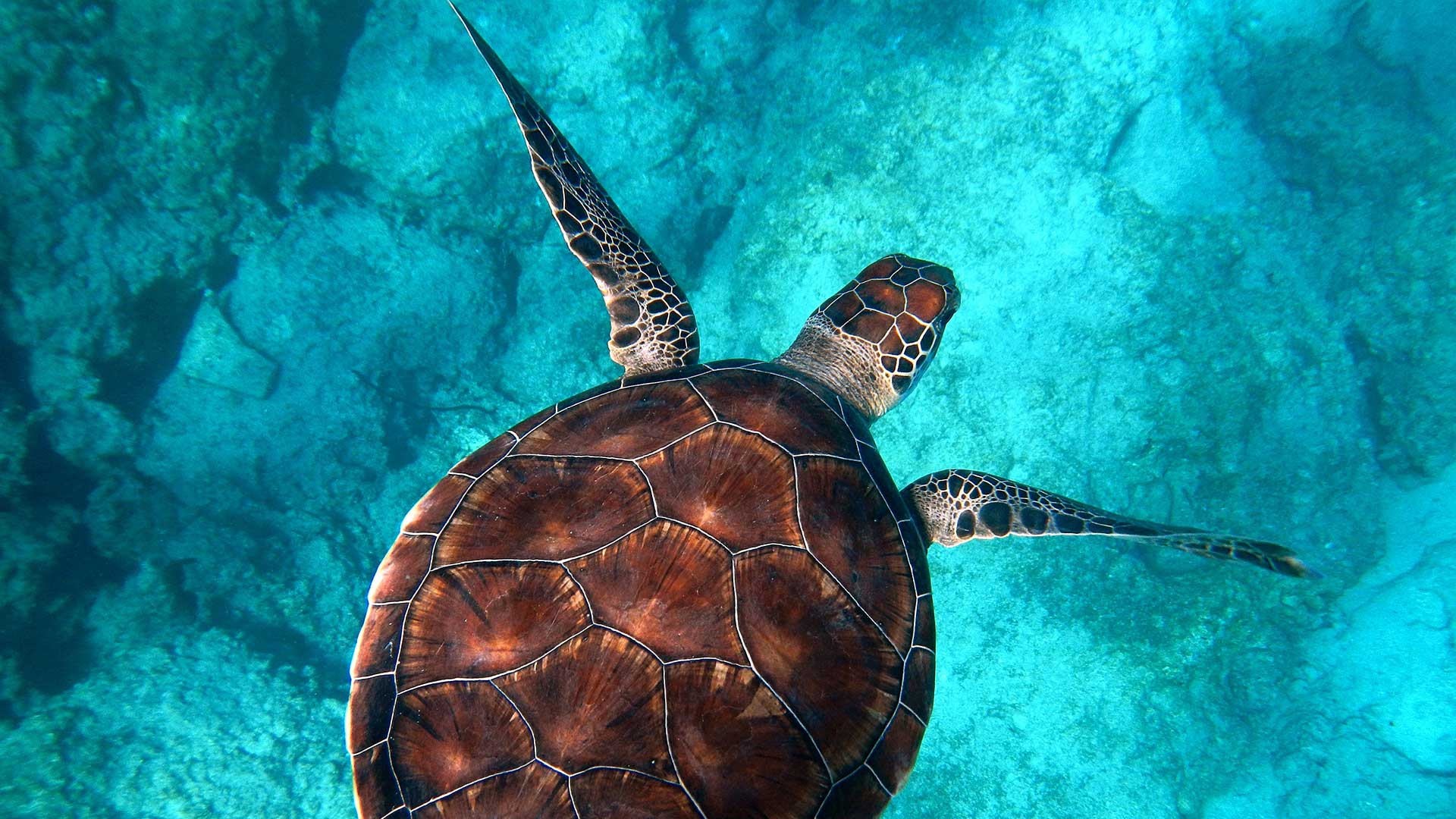Get to know your neighbors: Western Sand Dollar
August 17, 2017

Photo courtesy of the Monterey Bay Aquarium
I am the western sand dollar, scientifically known as Dendraster excentricus. Contrary to popular belief, I am neither a rock nor a shell but an actual living animal! I am probably what comes to mind when you picture a sand dollar but just like many organisms, we come in all shapes, colors, and sizes. My fish friends never believe me when I say that I am a flattened sea urchin. I know that my spines are not as big but we are both echinoids!
I am mostly recognized for the petalidium or flower design on my body. You may have noticed that this design is always off center; it’s one of our defining features! While I’m currently a nice shade of purple, my sand dollar friends are different shades of brown, gray, and black. As you have probably observed, we are not big animals. I reach about 76 mm wide but we can grow as big as 120 mm wide. That compares to the size of a baseball and a DVD! Despite our size, we live between 6 and 10 long, joyful years, which we can attribute to our overall structural design and survival mechanisms. We have a sloped dome shape that gives us a flat height of approximately 10 mm. The top of this dome, where the petalidium is found, is known as the aboral surface. The bottom of the dome is the oral surface and contains the mouth, anus, and food grooves. Our bodies are covered in spines, which are what us adults use to move around. Younger sand dollars use their tube feet or cilia, just like our cousin the sea star. These tube feet also allow us to feed and breathe! Those found along the petalidium are larger and used for respiration. Our mouth is found in the center of the oral surface and our anus below it, towards the edge of our body. It might come as a surprise to learn that I actually have a jaw and teeth-like structure that comes in handy for grinding up crustacean larvae, small copepods, diatoms, and plankton.
My body shape makes me a hydrofoil or a surface that works to push against the water to provide thrust, much like the fins of a shark or a paddle used to kayak. In order to eat, I have to bury one side of my body into the sand and angle myself into the current. My body shape is especially helpful because it maximizes the amount of food that I trap and eat. I also need to use my body to keep myself in one location. I don’t attach to a surface like barnacles and mussels. Instead, adults grow a heavier skeleton to weigh us down while juveniles have to eat heavy grains of sand to serve as anchors. Because currents make it easier to feed, I prefer to live in intertidal zones, although some sand dollars can live as deep as 90 meters! You can find me and my friends living in colonies, crowded together and half buried in the sand or trying to escape sea stars, crabs, and seagulls! You’ll most likely catch us living in the northeastern Pacific, from Alaska to Baja California. Fun fact: we’re the only sand dollar found in Oregon and Washington.
Why should humans care about me?
We are particularly valuable to benthic ecosystems because we live burrowed in the sand. We provide oxygen to the ocean floor and help create livable conditions for other benthic organisms. We are also the food for popular tidepool organisms such as the pink sea star and crabs. When we die we often wash up on beaches, where you humans enjoy finding and collecting our dry, white bodies and using us for decoration. However, we do experience risks that threaten our livelihoods and ability to provide enjoyment for others.
Along the west coast, destructive fishing such as bottom trawling is a huge threat to all benthic organisms because it destroys habitats and captures anything in its path. As I mentioned, I don’t attach to the ground but rather weigh myself down. Thus I am defenseless against the aggressive sweeping motion of bottom trawling. Other major threats include events caused by climate change. Severe storms harm me and other benthic organisms in the same way as bottom trawling, they sweep and destroy ecosystems. Rising sea levels will expectedly affect where I can live, as intertidal zones will be altered. Ocean acidification dissolves the shells and exoskeletons of calcified animals like me and lowers calcifying rates.
I love living in marine protected areas (MPAs) because they limit the amount of human disturbance that me and my friends are subject to. They protect us from the dangers of commercial fishing such as bottom trawling. They help create thriving ecosystems with high diversity and healthy water quality. However, as beneficial as MPAs are, they don’t directly protect me from climate change.
You have the power to help. Small changes such as recycling and driving less have a tremendous impact on ecosystems everywhere! Equally important is telling your friends about me! Spread awareness about how you all can help me and my friends.
All the best,
The Western Sand Dollar
(Aka the flattened sea urchin)
Dendraster excentricus



You must be logged in to post a comment.